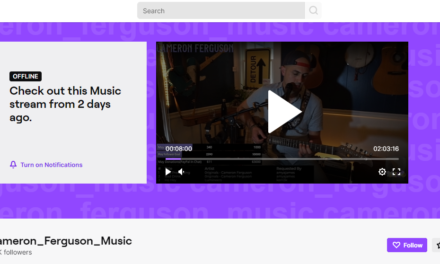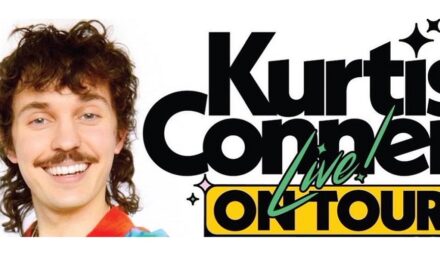
JUNE 17, 2022
In this issue:
- Full Tilt: Mega-Success Failures
- Stan: Personal Finance Club
- Tilt Free Course: What Creators Need to Know Now to Avoid Legal Trouble
full tilt
Mega Success Stories Can Deflate Your Potential
I’m addicted to learning. I try to learn tactics and strategies everywhere. I’ve fallen in love with the stories of many high achievers – those million-dollar success stories.
It seemed if I could peek behind the curtain, I could replicate their feats. Those stories felt inspiring. But I don’t like them anymore. Let me explain.
Every business success book talks about an Apple or Airbnb. Every tutorial about how to grow on YouTube talks about MrBeast or Casey Neistat. They work because we want to become like those heroes.
But we only see the tip of the iceberg – the phenomenal view count, the seven-figure revenue, the amazing product launch. But we don’t know:
- How many failures occurred before the big success?
- What did the entrepreneur sacrifice to achieve it?
- Does success look like what they hoped for?
When we look at our own content businesses, we are painfully aware of the failures, the sacrifices, and the vision. Our negativity-biased mind amplifies the negatives and disregards the positives in our own story.
We have selective blindness when we consider mega-success stories. They trick our minds in several ways.
Success mistake no. 1: We expect a quick, huge win. Our heroes’ achievements came almost overnight (or at least it seems so). We launch our blog, publish 24 posts in three months, and … analytics barely make a blip, no sales happen, and no fame is gained. Depressed and discouraged, we turn to another channel or quit altogether.
Realistic expectations can make us more patient and allow us to stay focused on what we set out to do.
Success mistake no. 2: We think entrepreneurship is unicorns and rainbows. The first months, even years, of any content entrepreneur’s journey are a path toward discovery. Because we don’t recall or never knew our creator heroes’ missteps and failures, we think our mistakes are a sign of being on the wrong path.
Learning from our mistakes rather than seeing them only as failures can help strengthen our perspective and our business.
Success mistake no. 3: We need outsized success. Big success stories are magnetic because they are exceptional. But we forget that. We convince ourselves that our heroes’ exceptional success is the only success acceptable for our business.
Instead, set more realistic goals that can be accomplished in the short and long term. By achieving each mini-goal, we are more likely to progress to the next success.
Success mistake no. 4: We must follow the same path. A handful of omnipresent case studies usually depict a restricted subset of all possible paths to success. We get frustrated if our path doesn’t look like our heroes’.
There are endless ways to succeed. It may be our heroes’ path, but it is more likely to be a path that we carve out for our unique environment, business, audience, etc.
– Alberto Cabas Vidani
For more practical advice on how to use success stories for your benefit, read the full story.
New Free Course From The Tilt
Legal trouble can spell disaster for creators. We all know that agreements and clauses are necessary evils as content entrepreneurs. But do you really understand what’s in all the legal mumbo jumbo?
No? Not really? The Tilt can help with our course What Content Creators Need to Know Now to Avoid Legal Trouble presented by Ruth Carter, Esq.
This mini-course provides a great introduction to the terms and concepts that you might see in your next legal document or agreement. Ruth provides explanations of pertinent legal terms with examples relevant to content creators.
Sign up today so you understand what that next legal document includes and how to cover yourself as a creator.
we’re a stan for … Jeremy Schneider 
Entrepreneur: Jeremy Schneider
Biz: Personal Finance Club
Tilt: Personal finance for beginners
Scene: Website, Instagram (392K), TikTok (112.7K), Facebook (13K), YouTube (6.47K)
Snack Bites:
- Jeremy Schneider created the Personal Finance Club for those new to the world of finance, investing, Roth IRAs, and more.
- Through consistent posting of good content, he grew a following on social media.
- He advises other entrepreneurs to realize all the hard work that goes into creating a content business.
Why We Stan:
Jeremy Schneider grew his audience through his personal finance content hub so well that he earned $110K in revenue the first week he launched an online investment course priced at $79.
– Shameyka McCalman
Check out more of Jeremy’s story.
quick talk
Caught on … Tilt Legal Mini-Course
“Have a company policy that says you don’t lift a finger until there’s a contract in writing and signed. And stand by it.” – Ruth Carter
things to know
Money
-
Not traditional: Creators who compare a content business to working a traditional job set unrealistic expectations. That’s why so many YouTube channels, podcasts, and newsletters stop after a few months. (Simon Owens)
Tilt Take: Survive the early stage by not expecting the business to support you. Our research shows it takes 17 months on average for that to happen. -
Big for the small: Brands are finding success by doing fewer celebrity endorsements and more deals with nano- and micro-influencers who produce better engagement and ROI. (PR Daily)
Tilt Take: As budgets tighten, marketers are forced to rethink their traditional partnerships. It’s a good time to remind them to think about you.
Audiences
-
Don’t go overboard: A survey of consumers found 81% say they unfollow creators if they post sponsored content more than a few times a week. (Sprout Social; h/t Jessica Dewell)
Tilt Take: Always put your audience first, or they’ll stop reading, viewing, or listening – and brands won’t want to work with you anymore. -
Loyalty game: Two-thirds of American Gen Z and millennials say they really enjoy and feel loyal to creators and influencers and regularly buy products they see them use or discuss on social. (Smart Brief)
Tilt Take: Add these stats to your media kit if these demographics make up your target audience.
Tech and Tools
-
Virtual homecoming: Meta is expanding the metaverse with its rollout of a feature to invite friends into one’s Meta Horizon Home environment to play games, watch videos, etc. (Social Media Today)
Tilt Take: Start thinking about your community and how VR might help you strengthen interactions and engagement. -
Rewatch glitch: Instagram updated its iOS app after complaints from users who had to rewatch Instagram Stories before they could see new ones. (The Verge)
Tilt Take: If your audience has glitchy experiences, pay attention and see if you can help (even if it’s just linking to a how-to article.)
And Finally
-
Million tips: Creators Colin and Samir of The Publish Press weekly newsletter and self-titled YouTube show say creators are more likely to be successful if they find an underserved market. (My First Million; h/t Tilt community)
Tilt Take: We’re big fans of establishing a unique content tilt. -
Extreme: YouTube gets less scrutiny because it’s difficult to analyze long-form videos than text or images. Plus, 80% of its traffic is from outside the US so cultural and language barriers don’t help. (NYU Center for Business and Human Rights)
Tilt Take: NYU did the difficult research and developed a report worth reading: How YouTube Spreads Hateful Content.
the business of content
- As we head into a recession, content creators have three choices.
- Pulizzi and Rose talk about why Web3 and crypto are only mostly dead.
- VC fund says it’s still possible to raise capital regardless of market conditions.
- Don’t quit your startup before you read this.
- Did you forget to pay the IRS this week?
the tilt team
Your team for this issue: Joe Pulizzi, Ann Gynn, Laura Kozak, Marc Maxhimer, and Dave Anthony, with an assist from Angelina Kaminski, Alberto Cabas Vidani, Shameyka McCalman, and Don Borger.
Get more of the Full Tilt stories on TheTilt.com.
Know a content creator who’s going full tilt? DM us or email [email protected]
Want to advertise on The Tilt? Go here.
Or email us at [email protected]
Interested in the tools we use? Check out our Tilt Tech Stack here.
Was this email forwarded to you? Get your own sub here.
Copyright ©2022 Tilt Media LLC All rights reserved.
Update your preferences | Unsubscribe | 17040 Amber Drive, Cleveland, OH 44111





